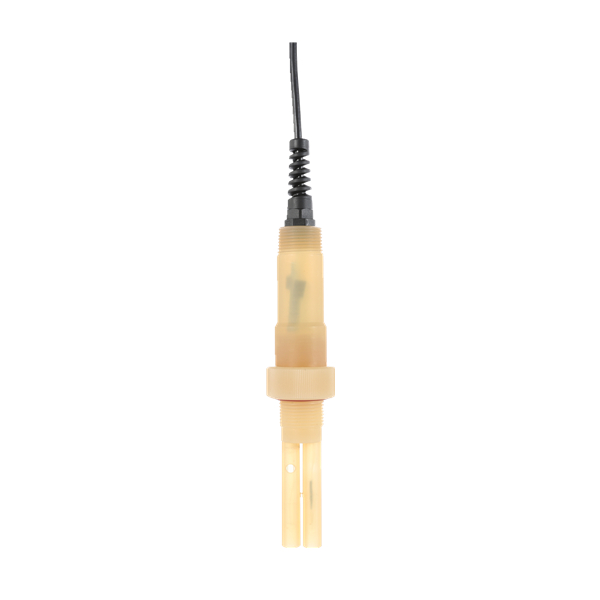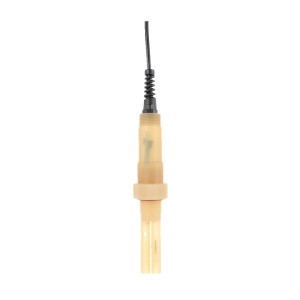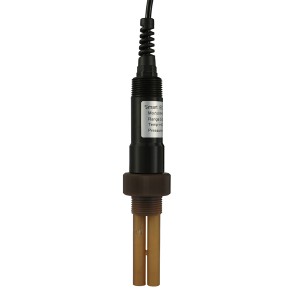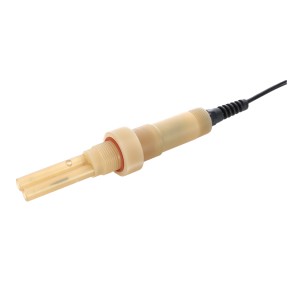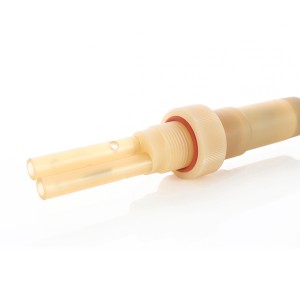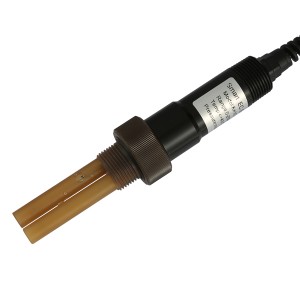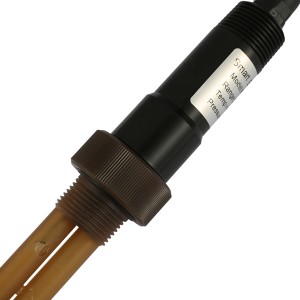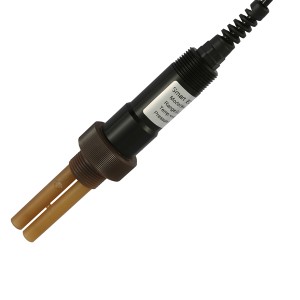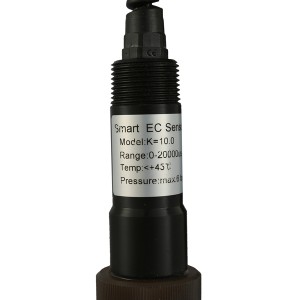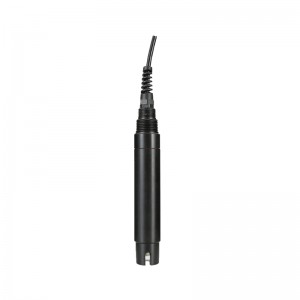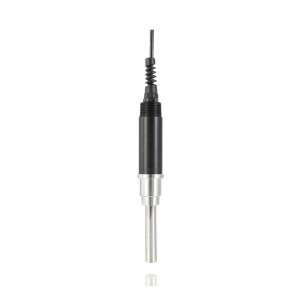Features
· Can work stably for a long time.
· Built in temperature sensor, real-time temperature compensation.
· RS485 signal output, strong anti-interference ability, the output range of up to 500m.
· Using the standard Modbus RTU (485) communication protocol.
· The operation is simple, the electrode parameters can be achieved by remote settings, remote calibration of electrode.
· 24V DC power supply.
|
Model |
BH-485-DD-10.0 |
|
Parameter measurement |
conductivity, temperature |
|
Measure range |
Conductivity: 0-20000us/cm |
|
Accuracy |
Conductivity: ±20 us/cm Temperature: ±0.5℃ |
|
Reaction time |
<60S |
|
Resolution |
Conductivity: 10us/cm Temperature: 0.1℃ |
|
Power supply |
12~24V DC |
|
Power dissipation |
1W |
|
Communication mode |
RS485(Modbus RTU) |
|
Cable length |
5 meters, can be ODM depend on user’s requirements |
|
Installation |
Sinking type, pipeline, circulation type etc. |
|
Overall size |
230mm×30mm |
|
Housing material |
Polysulfone |
Conductivity is a measure of water’s capability to pass electrical flow. This ability is directly related to the concentration of ions in the water
1. These conductive ions come from dissolved salts and inorganic materials such as alkalis, chlorides, sulfides and carbonate compounds
2. Compounds that dissolve into ions are also known as electrolytes 40. The more ions that are present, the higher the conductivity of water. Likewise, the fewer ions that are in the water, the less conductive it is. Distilled or deionized water can act as an insulator due to its very low (if not negligible) conductivity value
3. Sea water, on the other hand, has a very high conductivity.
Ions conduct electricity due to their positive and negative charges
When electrolytes dissolve in water, they split into positively charged (cation) and negatively charged (anion) particles. As the dissolved substances split in water, the concentrations of each positive and negative charge remain equal. This means that even though the conductivity of water increases with added ions, it remains electrically neutral

